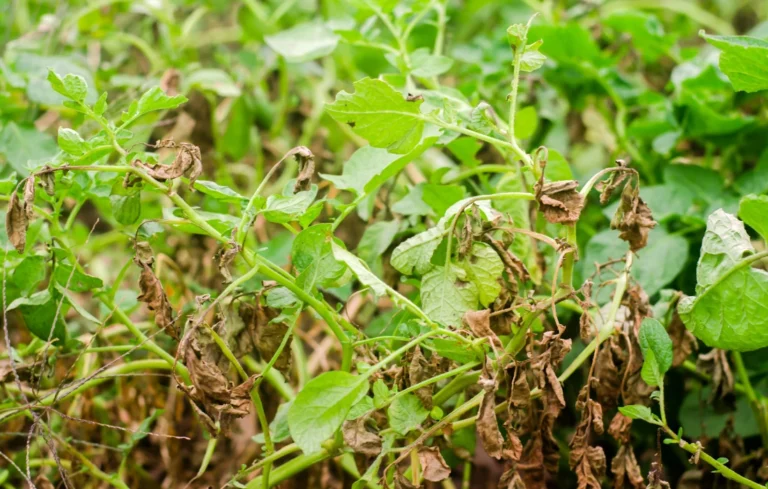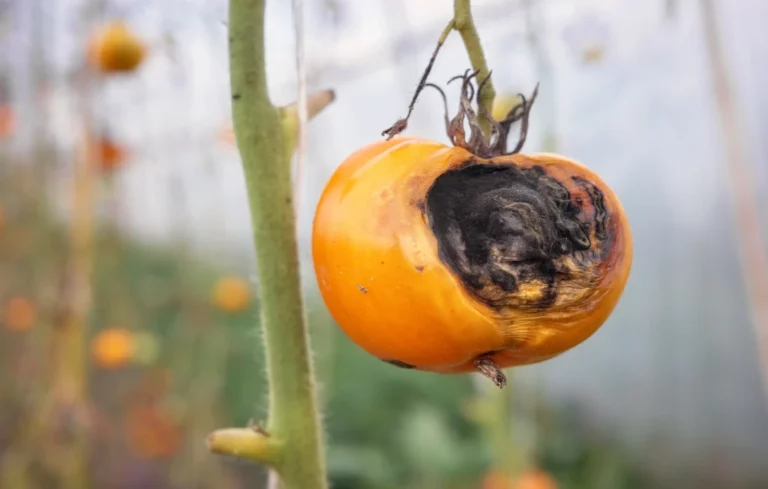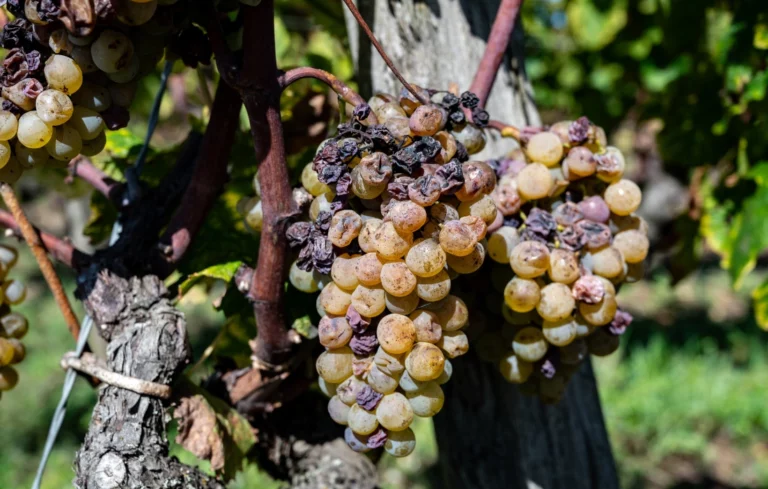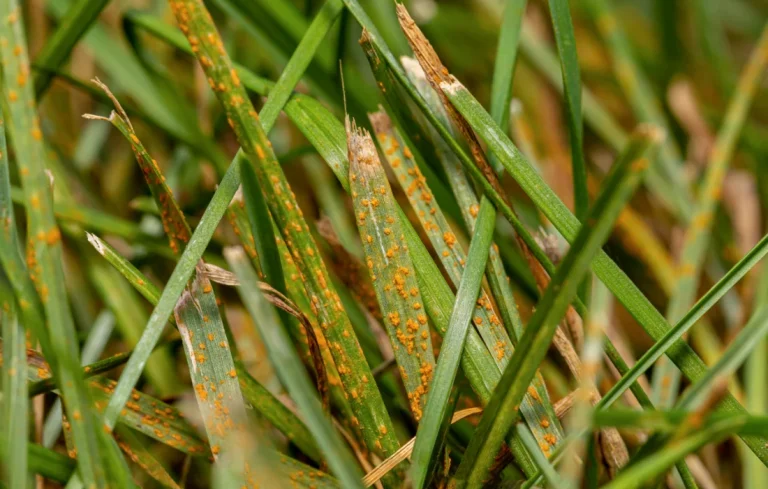Septoria leaf blotch is the main foliar disease of wheat in France. Present every year, its intensity varies depending on climatic conditions. In cases of high pressure, yield losses exceed 50% in the most affected plots. For farmers and cereal growers, septoria represents a major challenge, especially as conventional curative solutions are becoming less effective. In light of this, natural and preventative approaches, such as those we are developing at Agrobiotop, are gaining ground. Focus on this disease and the biological means to contain it.
What causes Septoria leaf blotch in wheat?
Wheat septoria is caused by two microscopic fungi belonging to the Ascomycetes: Zymoseptoria tritici , the dominant pathogen on soft wheat, and Parastagonospora nodorum , more present on durum wheat and triticale. These fungi, widespread throughout the world, find a favorable breeding ground in France, particularly in the northern and western half of the country.
Disease development depends largely on climatic conditions. Regular rainfall, mild temperatures, and high humidity strongly favor its spread. The fungus persists from one year to the next in crop residues, particularly straw left in the field. The disease then takes hold in the fall, initially affecting young leaves before progressing silently throughout the winter.
Yield losses are not negligible. They are mainly due to the impact of the fungus on the leaf surface, reducing the plant’s ability to produce its sugars through photosynthesis.
Biological cycle of the disease
After harvest, the fungus survives on crop residue. In the fall, the perithecia, sexual structures found on these debris, release ascospores. These spores, carried by wind or rain splashes, contaminate the leaves of young wheat seedlings.
In winter, the disease progresses slowly due to low temperatures. But as soon as humidity returns, the pycnidia, black structures visible to the naked eye on leaf lesions, release new spores: pycnospores. They are spread by rain, wind, and friction between leaves.
Pycnospore germination requires free water, which explains the close link between Septoria and humidity. After infection, a long incubation phase precedes the appearance of symptoms. This latency, lasting 15 to 21 days, makes early detection difficult. This is why prevention plays a key role in combating this disease.
Symptoms of Septoria leaf blotch
The first symptoms of Septoria appear in late autumn. The leaves show spots of various shapes and colours: some are elongated and whitish, others brownish, oval or rectangular, bordered by a yellow halo. In the case of Parastagonospora nodorum , the spots take on a light brown shape, with a necrotic diamond-shaped centre and yellowing around them.
These lesions can aggregate and form large, irregular patches. Within them, small black dots—pycnidia—appear. These structures are characteristic of Zymoseptoria tritici and demonstrate the fungus’s ability to reproduce and spread.
On ears, only P. nodorum causes visible symptoms: brown necrosis on the glumes, sometimes accompanied by a purplish-brown discoloration on their upper part. This type of attack remains uncommon but must be known for correct identification.
Do you need a natural solution against wheat septoria?
Conditions favoring Septoria leaf blotch
Certain agronomic and climatic conditions create an environment particularly conducive to the development of Septoria. Wet periods and inappropriate cultural practices can tip a controlled situation into an active epidemic.
Aggravating factors include:
- Unburied crop residues , which harbor the fungus between two seasons.
- Young winter wheat seedlings , which can already be infected in the fall.
- Mild winters and wet springs favor germination and dispersal of spores.
- High humidity , essential for the release and germination of pycnospores.
- Too much rain , which can paradoxically have a leaching effect, limiting local propagation.
- Varietal sensitivity , which remains a major lever for risk management.
- The sowing date , with pathogen pressure generally lower in the case of late sowing.
- The population density , which can create a favorable humid microclimate depending on the weather conditions.
Possible confusion
SSeptoria leaf blotch on wheat can be confused with other foliar diseases of wheat, including helminthosporium leaf spot. The latter has visually similar symptoms, with brown or necrotic spots on the leaves. Careful observation of the black pycnidia and the shape of the lesions can differentiate the two diseases.
Agrobiotop solutions against Septoria leaf blotch
Soil improvement, aeration and oxygenation
- SILIBOOST (powder to dilute)
- SILIPELLET (granule, spreader)
Seed coating : Protection against disease, strengthens seeds, promotes rooting. Rapid emergence
Dosage for 100 kg of seeds: 100 ml CHITOPROTECT + 900 ml YAKADOP
Biostimulant: first line of defense against diseases and pests (Strengthens crops)
- YAKADOP (Dose: 5 liters / 100 liters of water / hectare)
Septoria Treatment
- CHITOPROTECT (Chitosan)
- YAKAPRO
1 liter CHITOPROTECT + 5 to 10 liters YAKAPRO / 100 liters of water / hectare
Septoria Treatment
- BENTOBIO (sodium bentonic clay – Thanks to its strong absorbent power, this solution helps create a physical barrier against this disease)
- CHITOPROTECT (Chitosan)
1 liter CHITOPROTECT + 1kg BENTOBIO /100 liters of water/hectare
Agronomic prevention against wheat septoria
Agronomic management remains the cornerstone of the fight against Septoria leaf spot. By combining several levers, it is possible to significantly reduce fungal pressure. Here are some best practices to implement:
- Choose tolerant or resistant varieties to limit the impact in the event of infection.
Implement a broad crop rotation to break the fungal cycle. - Bury plant residues deeply to reduce sources of inoculum.
- Eliminate regrowth and weeds , which can act as a relay for the fungus.
- Avoid deep sowing , which lengthens the vulnerable period of young plants.
- Split the nitrogen fertilizer to limit excess leaf biomass, which is more sensitive to infections.
Other crop diseases:
Photo : Shutterstock





